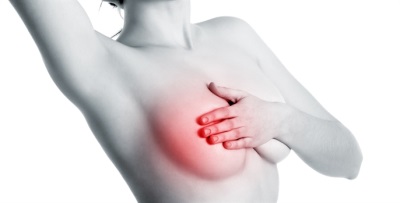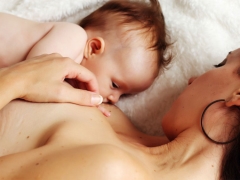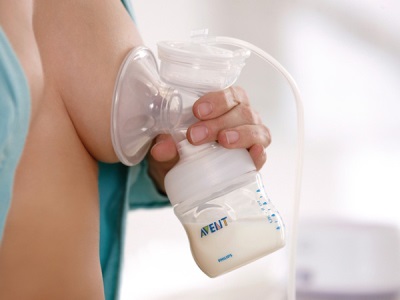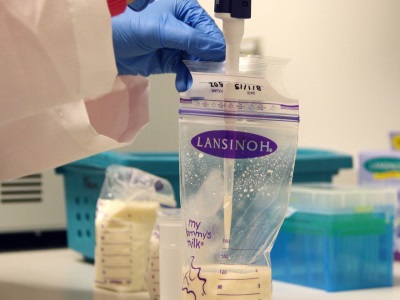Analysis of breast milk for sterility
When a nursing mother develops an infection, the woman experiences if the bacteria get into breast milk. Can the analysis of milk for sterility help in this case and how is it carried out?
What is it?
Breast milk can be tested in the laboratory, determining the number of bacteria in it. A similar analysis is also aimed at determining to which antimicrobial agents and bacteriophages sensitive pathological microorganisms seeded from milk.
The reasons
Milk testing for sterility is necessary if:
- A nursing woman developed mastitis.
- It is necessary to monitor the effectiveness of antibiotic treatment.
- There is prolonged diarrhea in a child up to 2 months, which is combined with a lack of weight gain.

Why do the analysis?
The study is very important for women who have developed a postpartum complication such as mastitis. The initial stages of this disease, called infiltrative and serous forms, can quickly turn into a purulent form, which is dangerous for a nursing mother, as well as for babies.
The main causative agents of this complication are staphylococci, enterobacteria, streptococci, Pseudomonas aeruginosa, and others. They are often resistant to a number of antibacterial agents, so simultaneously with the identification of bacteria that cause mastitis, it is important to know the sensitivity of microorganisms to therapeutic agents.
Sowing milk for sterility
With the help of this analysis, microorganisms and fungi are detected in human milk, and their number is also determined. The analysis of milk is important to conduct prior to the appointment of antibiotic treatment, and also recommend to repeat after treatment is completed.
Training
Milk from different breasts is tested separately. It is best to collect it in sterile containers that are dispensed in a laboratory that performs a milk test for sterility.
Before expressing the milk sample, the breast and hands should be washed with soap, then the mammary glands should be wiped with cotton swabs with alcohol (a separate swab for each breast). The first 5-10 ml of milk obtained from the breast is not taken for analysis, therefore they should be decanted separately and poured.
Next, 5-10 ml of milk from each breast is collected in two sterile containers, tightly closed with lids and labeled, indicating not only the name and date of birth of the woman, but also from which mammary gland the analysis was taken.
Before sending the milk to the laboratory, it can be kept at home in a refrigerator for up to 24 hours. However, it is best to bring containers with milk samples to the laboratory within two hours after decanting.
How to conduct the analysis?
To determine the sterility of breast milk, the provided samples are sown on a special nutrient medium. Sown medium is placed in an incubator and waiting for the appearance of colonies of microorganisms. These colonies count and determine the number of bacteria in human milk.
Accounting for colonies is carried out only for Staphylococcus aureus, Pseudomonas aeruginosa, Escherichia coli and other representatives of the pathological flora. Milk contamination can be nonmassive, and also with massive growth - more than 250 cfu / ml. Interpretation of the results gives the doctor, given the clinical data.
Is sterility accurate?
Although this analysis is very popular, the principles of evidence-based medicine indicate that its results are not of great value without taking into account the clinical picture. The bad news is that it is often the reason for prescribing antibiotics to a woman and child, which could have been avoided. Normally, breast milk is not sterile, because it is displayed on the surface of the skin, populated even in healthy women with different types of microbes. And their getting into breast milk is not at all surprising. So, it is impossible to prescribe antibiotics to a nursing mother only by deciphering such an analysis of sterility.
The results of the analysis can confirm the presence of the disease, if the nursing mother has other symptoms of infection - chest redness, intense pain in the breast, elevated body temperature. In other cases, the determination of bacteria in human milk is not an important criterion and should not be carried out.
What to do if staphylococci or other microbes are found?
Experiencing that microorganisms found in human milk will cause dysbiosis in an infant is not worth it. The change in the ratio of bacteria inside the intestines of the baby is in no way connected with the ingress of microbes with food, since they are destroyed in the stomach by the action of hydrochloric acid. Studies have confirmed that microorganisms from human milk do not fall into the feces of the baby. In addition, all the bacteria that are found in my mother's milk, there are also a large number of other objects that surround the infant. And trying to eliminate the bacteria in the milk to protect the crumbs is pointless.
It is not necessary to interrupt breastfeeding of a baby due to the detection of bacteria in milk. Simultaneously with the milk, special factors against these bacteria (including antibodies) also come to the baby. Boil female milk so that the microbes are destroyed in it are also not recommended, because milk from a female breast after boiling loses a significant amount of useful properties.
So, if the mother has no signs of mastitis, then the detection of microbes in the milk should not be the reason for prescribing treatment. Children should also not be treated.











